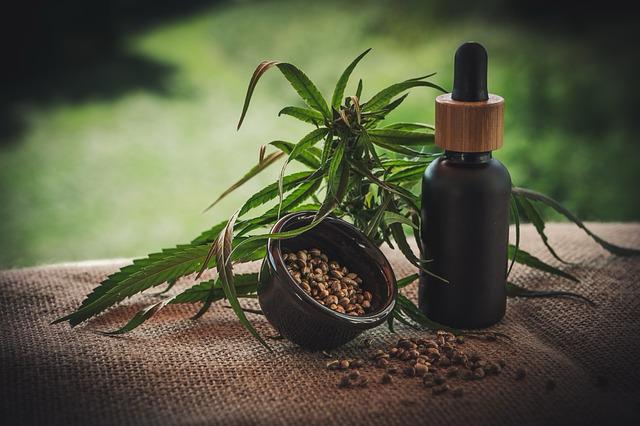Cannabis oil, also known as marijuana oil or THC oil, has gained popularity for its potential therapeutic benefits. The potential advantages of cannabis oil include pain relief, relaxation, and management of certain medical conditions. Making cannabis oil at home allows you to control the ingredients and potency, ensuring a personalized product tailored to your needs. While the process may seem daunting, it can be straightforward with the right tools and knowledge. This guide explains the steps involved in making cannabis oil at home, from selecting the right cannabis strain to extraction methods and dosage considerations.
1. Selecting the Right Cannabis Strain
The first step in making cannabis oil at home is selecting the right cannabis strain, as different strains contain varying levels of cannabinoids and terpenes, which contribute to their unique effects and therapeutic properties. Indica-dominant strains are often preferred for their relaxing and sedating effects, making them suitable for pain management and insomnia. Sativa-dominant strains, on the other hand, are known for their uplifting and energizing effects, making them ideal for daytime use and enhancing mood. Hybrid strains combine the characteristics of both indica and sativa strains, offering a balanced experience that caters to individual preferences. If you start with autoflower cannabis seeds in the strain of your choice, the growth process will be simpler.
2. Extraction Methods
Once you’ve selected the right cannabis strain, the next step is extracting the cannabinoids and terpenes to create cannabis oil. There are several extraction methods to choose from, each with its advantages and considerations. One common method is solvent extraction, which involves using solvents like alcohol, ethanol, or butane to extract cannabinoids and terpenes from the cannabis plant. While effective, solvent extraction requires careful handling and ventilation to ensure safety and avoid contamination. Another popular extraction method is the use of a cannabis oil extractor machine, which employs heat and pressure to extract cannabinoids and terpenes from the cannabis plant. This method is relatively simple and efficient, producing high-quality cannabis oil with minimal effort.
3. Decarboxylation Process
Before using cannabis oil, it’s essential to activate the cannabinoids through a process called decarboxylation. Raw cannabis contains cannabinoid acids like THCA and CBDA, which are non-psychoactive and require heat to convert into their active forms. Decarboxylation involves heating the cannabis plant material at a specific temperature for a predetermined time to activate the cannabinoids. This process can be achieved by oven baking, sous vide cooking, or using specialized decarboxylation devices. To decarboxylate cannabis flower, preheat your oven to 220-240°F (105-115°C) and spread the ground cannabis evenly on a baking sheet lined with parchment paper. Bake the cannabis in the oven for 30-45 minutes, stirring occasionally to ensure even heating.
4. Infusion Process
After decarboxylating the cannabis, the next step is infusing it into a carrier oil to create cannabis oil. Common carrier oils used for cannabis infusion include coconut oil, olive oil, and vegetable glycerin, each offering unique properties and flavors. To infuse cannabis into oil, combine the decarboxylated cannabis with the chosen carrier oil in a double boiler or slow cooker set to low heat. Allow the mixture to simmer for 1-2 hours, stirring occasionally to ensure an even infusion. During the infusion process, cannabinoids and terpenes from the cannabis will bind to the carrier oil, creating cannabis-infused oil with desired potency and flavor profiles. Once infused, strain the cannabis oil through a fine-mesh sieve or cheesecloth to remove any plant material, resulting in a smooth and potent cannabis oil ready for use. Store the cannabis oil in a dark, airtight container in a cool, dry place to preserve its potency and freshness.
5. Dosage Considerations and Usage
When using cannabis oil, it’s essential to consider dosage and usage guidelines to ensure safe and effective consumption. Start with a low dose and gradually increase as needed to find the optimal dosage for your individual needs and tolerance level. Keep in mind that the effects of cannabis oil may vary depending on factors such as strain, potency, and individual metabolism. Additionally, consider the desired effects and intended use of cannabis oil when determining dosage, as higher doses may be necessary for therapeutic purposes such as pain management or insomnia. You should also consider the method of consumption when using cannabis oil, as it can affect the onset and duration of effects. Cannabis oil can be consumed orally by adding it to food and beverages or sublingually by placing it under the tongue for faster absorption. Alternatively, cannabis oil can be used topically by applying it directly to the skin for localized relief of pain and inflammation.
Conclusion
Making cannabis oil at home is a rewarding and empowering process. It allows you to create personalized products tailored to your needs and preferences. By following these steps, you can create high-quality cannabis oil for various therapeutic purposes. Whether you’re seeking relief from pain, relaxation, or management of medical conditions, DIY cannabis oil offers a versatile and customizable solution. With careful attention to detail and experimentation, you can enjoy the therapeutic benefits of cannabis oil safely and effectively in the comfort of your own home.


